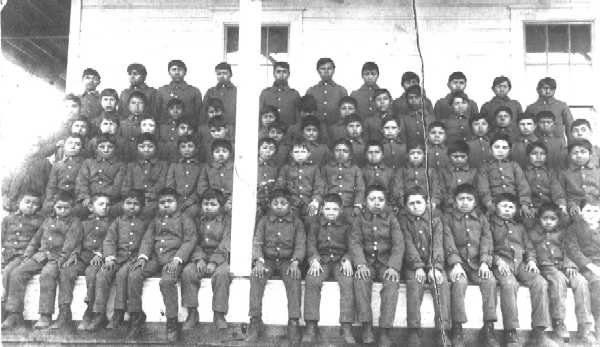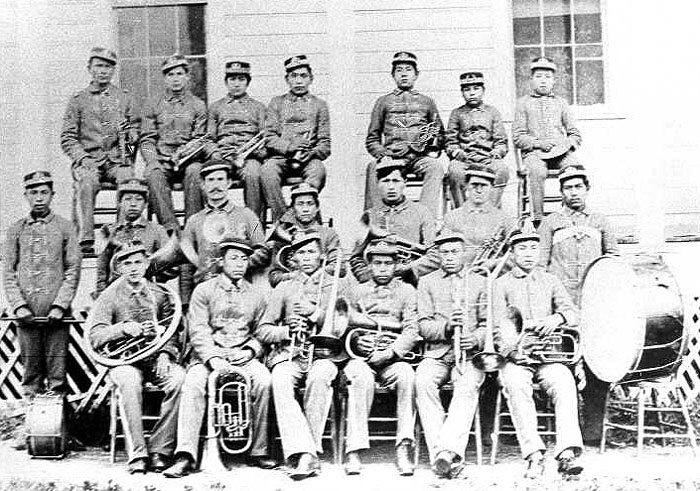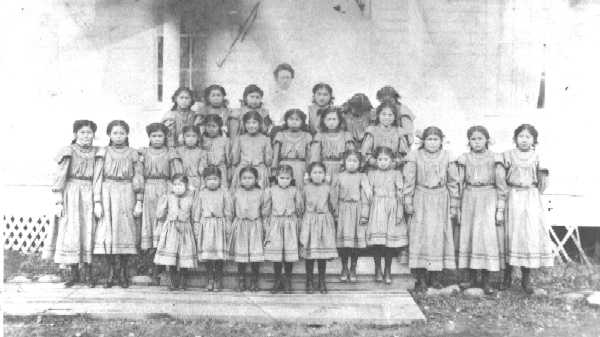| 1843: General Domestic 1845 1862 1865 1866 1869 1870: Super. Report Matron's Report 1871 1872 1873 1874 1875 1876 1877 1878: Lapwai Agency Quapaw Agency 1879: Lapwai Agency 1880: Lapwai Agency 1881: Lapwai Agency 1882: Lapwai Agency Ponca Agency 1883: Lapwai Agency Ponca Agency 1884: Lapwai Agency Ponca Agency 1885: Lapwai Agency 1886: Lapwai Agency 1887: Lapwai Agency Com. Report 1888: Lapwai Agency 1889: Lapwai Agency Super. of Ed Brd. Ind. Com. 1890: Lapwai Agency 1891: Lapwai Agency 1892: Boarding School Ft Lapwai School 1893: Lapwai Agent Ft Lapwai School |
School Children - Lapwai Fort Lapwai School Band School Children - Lapwai Along with agriculture, education was a cornerstone of the acculturation policy. Rev. Henry H. Spalding and his wife, Eliza, established a school soon after opening their mission in 1836. Each treaty has provisions for education, which include funds for building schools and employing teachers; as with many of the provisions of the treaties, what the treaties called for and what actually occurred were distinctly different things. Most agents address education in their reports to the Commissioner of Indian Affairs, and often separate reports from the superintendent of schools are included. It is interesting to trace the move from reading, writing and academics towards the training of the industrial, vocational school. |


